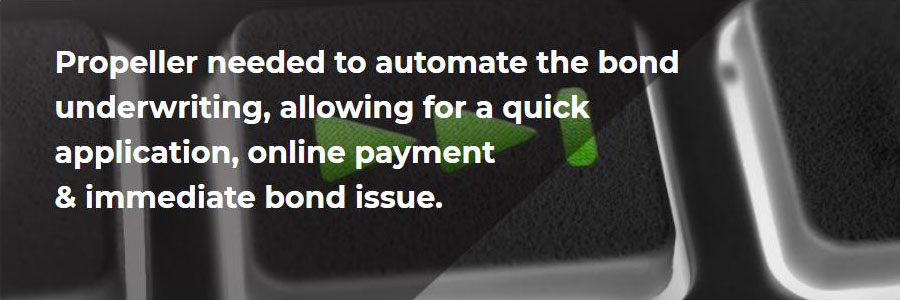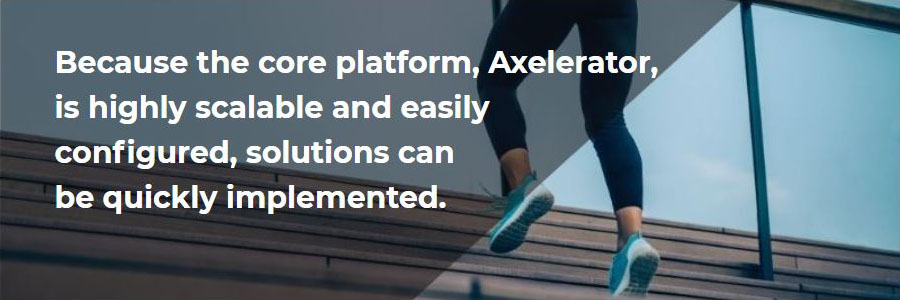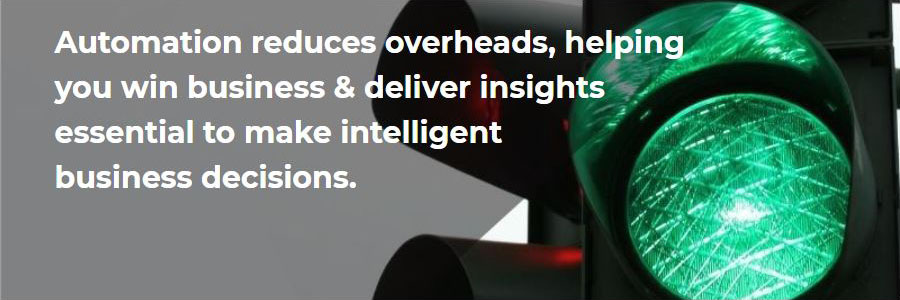Can underwriting be automated in commercial insurance?

In commercial insurance, quality underwriting is paramount. Can you standardise and fully automate the process?
By Martin Stewart : 16th of November 2020
In commercial insurance, quality underwriting is paramount. McKinsey research shows operating results have more impact on overall financial performance than capital leverage or investment returns.
And yet, for many commercial insurers, underwriting is perceived as so complex that it’s evolved into an art rather than a science. Combined with legacy systems that don’t support new technology, this makes it difficult to effect the change required to hit the bottom line.
Why is commercial underwriting so labour intensive?

Underwriting is a sizeable portion of an insurer’s operating costs and badly done can lead to costly blow outs in claims costs. Therefore, a great opportunity lies in improving profitability by finding ways to make underwriting more accurate and efficient. Yet in most cases the processes which evolved before the internet are still in place, with a focus on paper forms, manual data processing and lots of phone calls and emails.
Duties are divided between agents, brokers, product managers, underwriters, administration staff, insurers and reinsurers. Each has their own way of doing things, with manual processing allowing exceptions and special conditions to creep in. Underwriters are often reluctant to standardise their premium formulas and underwriting questions because of all the exceptions.
Coming up with a standard formula is admittedly a challenge with significant differences in risk to be found across businesses. Location, quality of security system, fire risk, neighbours, building construction and proximity to emergency services are just a few of the variables that might apply to a retail business, for example. The impact of risk factors can also change quickly—such as with bush fires, floods, storms or the unexpected pandemic in 2020.
Additionally, any change that needs an amendment to the application form or product disclosure statement will require review by product managers and staff in marketing, legal and risk. Getting agreement and making these changes is time consuming and difficult. Often underwriters prefer just to manually apply the change in the rating sheet.
Considering all of this, implementing a system to streamline and automate the end-to-end process appears onerous and expensive. Trying to do this by updating an existing system or bolting on new technology to an old system rarely works.
How Propeller found a solution to 100% automated underwriting
One company that found an effective solution is Propeller Inc, a Texas-based surety bonds provider. Traditionally, surety bonds demand paper-based applications, manual processing and in the US, even faxes, resulting in slow processing times and significant frustration. As a result, surety bonds are often only sold by agents as an accommodation to existing clients.
WIth over 10,000 Bonds with different rules and Bond documents for each the Propeller team recognised that to simplify the underwriting process, they required a system that allowed for flexibility and took away the need for agents and brokers to complete manual paperwork. It also needed to be easy to use, available across multiple channels (smartphone, tablet, desktop and by telephone call) and provide instant policy issue.
Plus because the platform is built on Axelerator the option is there to add new Life and Property & Casualty poducts to be distributed through the same Agent network.

Most importantly, it needed to fully automate the bond underwriting, allowing for a quick application, online payment and immediate bond generation. They found their solution in our Axelerator platform.
The Propeller solution works by having a single master policy template with inbuilt rules for all 10,000 bonds. This caters for all types of surety bonds, including licence, permit, construction, judicial and fidelity bonds.
The questions and the bond document are individually tailored through an online panel. Because of Axelerator’s configurability, a tailored form is generated for each bond asking only the questions needed for that bond, allowing agents to purchase bonds for their clients and also for commercial clients to purchase bonds directly.

Because the core platform, Axelerator, is highly scalable and easily configured, solutions can be quickly implemented for any other commercial insurance products.
How can other insurers follow suit?
1. Rationalise your products.
Traditional insurers have often added product after product for decades, resulting in a system that’s weighed down with near-identical offerings. The spreadsheets used for rating each product have become increasingly complex with lots of rating factors and elaborate premium calculations. Audit your offerings and rationalise the remainder. For each major product line, say professional indemnity, you should end up with a common set of questions and formulas that cover all the variations to be the foundation for an all-encompassing policy template that can then be configured for each occupation. This will allow you to rapidly add new occupations and fine-tune existing ones.
2. Introduce bundles.
Products that are often sold together can be bundled into a single policy. For example, a medium-sized business would typically want to take out business interruption insurance, professional indemnity insurance, directors and officers liability cover, workers’ compensation, travel cover and vehicle cover. Micro businesses may need a cut down version of the same covers. By bundling you can prevent repetitive entry of the same data across different applications and encourage clients to buy all the products in the bundle through convenience and discounts.
On top of the base bundle, you can introduce bundles of extras as bronze, silver or gold options. Three tiers of pricing for three tiers of cover. It’s simple and flexible.
3. Create the master template
Once you’re clear about your base offering, use a platform like Axelerator to create the master template so that you can quickly add and then update products as the situation demands.
How can insurers benefit from an automated system?

The benefits of a fully automated system are manifold. Automation can reduce your overheads, help you win new business and deliver the insights essential for making intelligent business decisions.
Automation makes the underwriting process exponentially more efficient. You can employ substantially fewer underwriters and administrative staff by removing laborious questioning and manual data input.
As all data is captured through online forms and validated on entry the risk of human error is significantly reduced. This means product managers can rely on accurate data to fine tune their policies and premium ratings.
Transaction costs are also lessened. Propeller, for example, allows commercial clients to apply directly for surety bonds without any additional work from agents. The cost of the transaction is lowered for the insurer because only very high value bonds require manual underwriting. Also, agents are open to lower commissions as they’re able to sell without extra administrative responsibilities.
Automation also offers a way to make the end-to-end process faster and easier for customers, leading to better customer engagement and higher satisfaction levels. Faster turnaround times for new business means you’re more likely to make the sale. A customer who can apply for a new product, be approved and pay for the policy in one transaction is far more likely to convert than one who puts in a request, waits a few days to be contacted and then has to go through a long information-gathering process before finally getting a quote.
If a customer wants to pay their premium monthly rather than annually in advance, a digital system can build this ability upfront. That avoids the client having to go to a third party for premium funding.
Likewise, automated renewals make it less likely that a customer will choose to shop around for a new insurer. The weeks before a policy is due to expire are the most vulnerable for insurers, so the easier the renewal process is for customers, the higher the probability you have of retaining them.
What is the future of automated systems?

As Propeller demonstrates, the technology already exists to create a scalable digital system. Axelerator is built on highly configurable modules, meaning that you can add new features and technologies as they arise. Your system can, therefore, become more efficient and more intelligent as the rise of insurtech continues unabated.
One such technology is machine learning. A fully automated system is already better poised to capture good quality data than a manual process or legacy system. It can also validate the data on input, meaning that your analysts will have confidence in its accuracy.
Using quality data, machine learning can analyse it against key factors such as your strike rates, claim rates for various products, competitors’ offerings and reinsurance rates. This level of insight helps you fine tune products and ensure that you remain competitive without reducing your margins below the point of profitability.
Machine learning can help with fraud detection, often spotting patterns indicative of fraud that wouldn’t come to the attention of human operators. The Australian Institute of Criminology estimates that 10% of all premiums paid in Australia are lost to fraud, so improvements in this area have an immediately tangible cost benefit.
Your system can also integrate data from external sources, like aerial photos from satellite imagery and drones, or vehicle data from telematics, to further bolster and improve your claims process.
Underwriting is the lifeblood of insurance and critical to the success or failure of a company. By moving to a fully automated platform, like Propeller did, you can reduce operating costs, risks and opportunity costs all while winning new business and increasing renewals.
